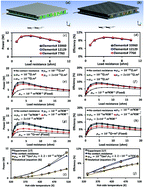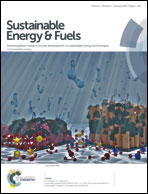A comprehensive optimization study on Bi2Te3-based thermoelectric generators using the Taguchi method†
Abstract
Low-grade waste heat recovery is a promising source of renewable energy; however, there are practical challenges in the recovery process. Thermoelectric generators (TEGs) are a viable solution, but their efficiency remains low, thereby limiting their implementation. The performance of TEGs can be enhanced by optimizing the module configuration; however, optimizing all the parameters experimentally using traditional experimental techniques will require several trials, and therefore, it is cumbersome and expensive. Here, we demonstrate the Taguchi method for optimizing TEG modules and demonstrate that full optimization can be achieved in just 25 experiments. The optimization has been achieved in four stages. In the first stage, a numerical model of thermoelectricity is developed and used in the second stage to optimize key geometric parameters of TEGs through the Taguchi method. In the third stage, the Taguchi method is used to optimize the geometric dimensions of the heat sink. Lastly, in the fourth stage, the effect of operating conditions on the performance of TEGs is investigated. The results reveal that the Taguchi method is capable of predicting the near-optimal configuration of TEGs.



 Please wait while we load your content...
Please wait while we load your content...